John Hurrell – 17 October, 2023
Obviously familiar with the conventions of Op Art, Grid Painting, Constructivism, and Minimalism, Fraser in these module-loaded works likes to mess with expectations, to on occasion, slyly thwart them. A restrained slowly-emerging humour (anticipating eventual viewer surprise) helped by the droll titles, is very evident.
In this display of nine moderately-sized abstract canvases, upstairs in Two Rooms, Robbie Fraser presents images that seem to allude to office furniture displays and the artworks of Donald Judd. They also, it seems, nod to the linear diagrams found in textbooks on art, perception and spatial illusion, especially those by varied experts in psychology like Ernest Gombrich, Rudolph Arnheim and Richard Gregory.
Quivering stacks and lined-up leaning modules dominate, with works often vertically split compositionally and made symmetrical, or horizontally bisected into two sections. They all trade on figurative and spatial ambiguity. Interpretation of forms is invariably slippery.
Most of these paintings feature isometric or single point perspective with parallel (not converging) edges, while the flat unmodulated colour within their repetitive hard-edged geometric shapes is harsh and strident. The result is an eye-popping blend of Nicholas Kushernick with Don Judd or (with figuration) Konrad Klapheck.
Obviously familiar with the conventions of Op Art, Constructivism, grid painting, and Minimalism, Fraser in these module-loaded works likes to mess with expectations, to on occasion, slyly thwart them. A restrained slowly-emerging humour (anticipating eventual viewer surprise) helped by the droll titles, is very evident.
Though these are abstractions, and maybe symbols or diagrams, there are seven different types of what could be called painted ‘subject matter’. Because of similarities, they can roughly be described as: stacked shelves; rows of boxes; stacked drawers; hovering platforms; linear diamonds; tilted books; and narrow tents. A peaked tent might be a tall woman’s skirt; a chest of drawers a Donald Judd; three rows of diamonds a harlequin’s chemise; an inverted v of hexagonal solar panels could be a drone.
Many of the rendered forms are inverted V or diamond shaped, that often play with parallel linear strips as narrow double-sided walls on trays, or floating flat planar squares. Others emphasise zigzagging linear trajectories where the line abruptly changes colour in repeated angular configurations. Or else line colour and planar widths sneakily change, in other unexpected places. Shape repetition or colour continuation can’t be assumed to be consistently regular. Subtle discrepancies are clearly intended.
Seen as an interacting group, Fraser’s snazzy, loudly exuberant paintings are a breath of fresh air. Highly optical and visually sizzling, they bodily celebrate the pleasures of looking closely, checking for inconsistencies and being affected by physical proximity. Halfway between minimalist non-objectivity and real life figuration they exploit semi-abstraction, and reference a realm of elegantly designed, functional office products. Avoiding restful soft pastel colours, and being highly tactile, they retinally vibrate, with lined-up agitated jagged points and thrilling nervous flicker.
John Hurrell
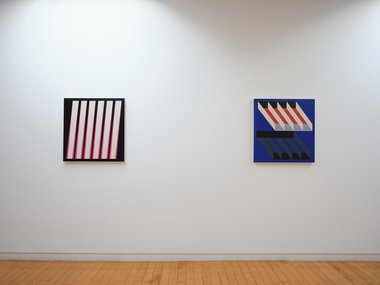
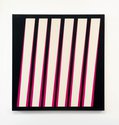
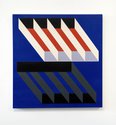
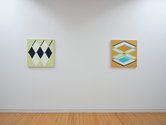
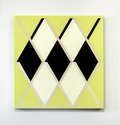
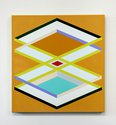
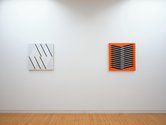
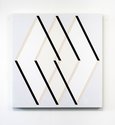
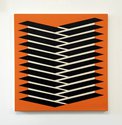
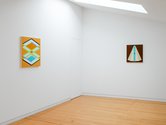
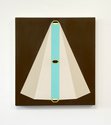
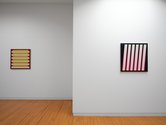
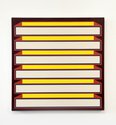
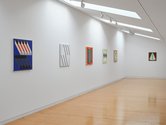
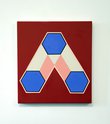
 Advertising in this column
Advertising in this column Two Rooms presents a program of residencies and projects
Two Rooms presents a program of residencies and projects



This Discussion has 0 comments.
Comment
Participate
Register to Participate.
Sign in
Sign in to an existing account.